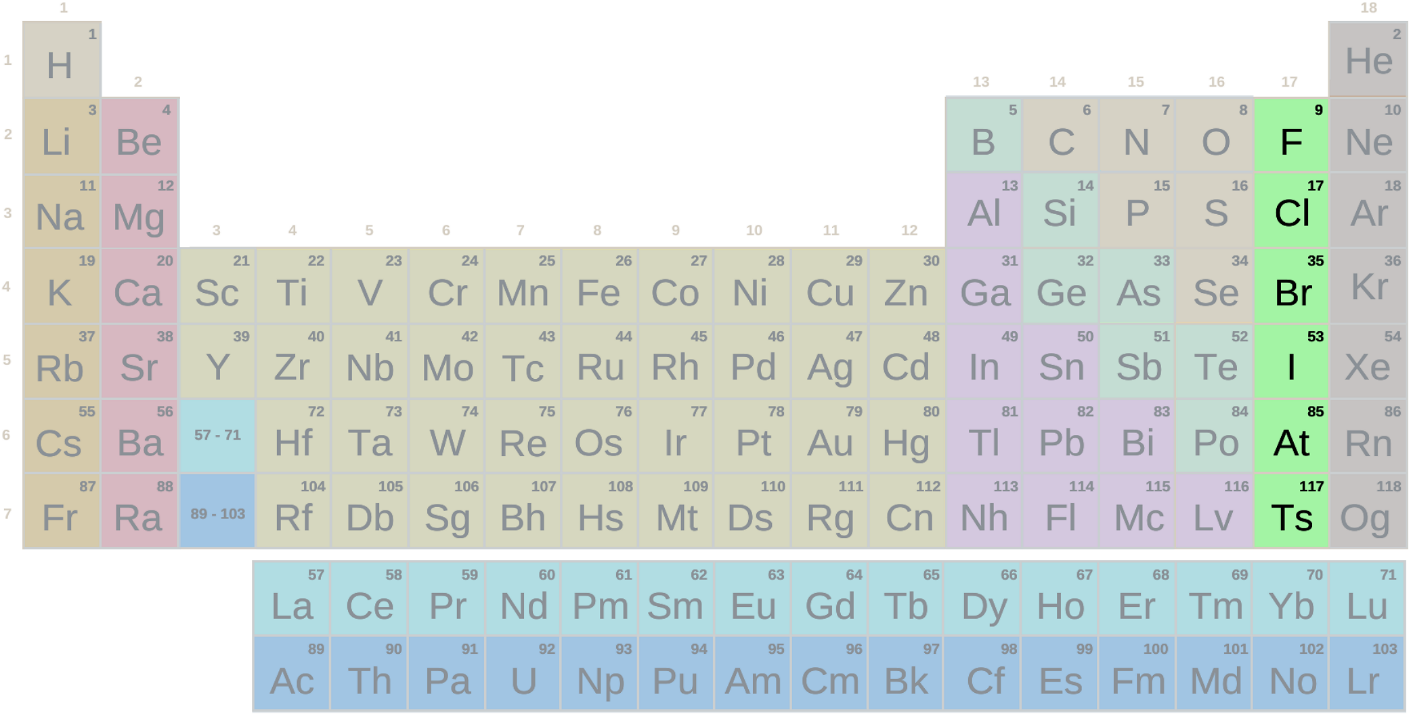
Name one halogen of period.
Answer
497.7k+ views
Hint: Halogen are the group 17 elements next to the noble gases. The period is the horizontal rows in the periodic table and the group is the vertical columns. Thus, the group 17 is formed by elements from period 2 to period 6 consecutively.
Complete step by step answer:
The halogen group is the Group 17 (7A family) elements consisting of:
- Fluorine from period 2,
- Chlorine from period 3,
- Bromine from period 4,
- Iodine from period 5,
- Astatine from period 6.

The halogen group elements are non-metals having the electronic configuration of outermost shell as
As we move down the group, from period 2 to 6, the size of the atom increases with the addition of electron shells which causes more electron repulsion and thus covers more space.
With the increase in the size, the Van der Waal dispersion force increases due to the ease of movement of electrons to form temporary dipoles. These dipoles form interactions between neighbouring molecules. Thus, the halogens exist as diatoms
The increased intermolecular force makes it difficult to break them, thus requiring more energy and increasing its boiling and melting point down the group.
Also, fluorine is the most electronegative element in the group due to its small size. It has a greater tendency to attract the bonding pair of electrons. Whereas, down the group this pairing electron gets further away from the nucleus, thus, less strongly attracted and they act as poor oxidising agents down the group.
Note: All the halogen form hydrides on combining with hydrogen, which is acidic. They also combine with metals forming salt.
Complete step by step answer:
The halogen group is the Group 17 (7A family) elements consisting of:
- Fluorine from period 2,
- Chlorine from period 3,
- Bromine from period 4,
- Iodine from period 5,
- Astatine from period 6.

The halogen group elements are non-metals having the electronic configuration of outermost shell as
As we move down the group, from period 2 to 6, the size of the atom increases with the addition of electron shells which causes more electron repulsion and thus covers more space.
With the increase in the size, the Van der Waal dispersion force increases due to the ease of movement of electrons to form temporary dipoles. These dipoles form interactions between neighbouring molecules. Thus, the halogens exist as diatoms
The increased intermolecular force makes it difficult to break them, thus requiring more energy and increasing its boiling and melting point down the group.
Also, fluorine is the most electronegative element in the group due to its small size. It has a greater tendency to attract the bonding pair of electrons. Whereas, down the group this pairing electron gets further away from the nucleus, thus, less strongly attracted and they act as poor oxidising agents down the group.
Note: All the halogen form hydrides on combining with hydrogen, which is acidic. They also combine with metals forming salt.
Latest Vedantu courses for you
Grade 10 | CBSE | SCHOOL | English
Vedantu 10 CBSE Pro Course - (2025-26)
School Full course for CBSE students
₹37,300 per year
Recently Updated Pages
Master Class 4 Maths: Engaging Questions & Answers for Success

Master Class 4 English: Engaging Questions & Answers for Success

Master Class 4 Science: Engaging Questions & Answers for Success

Class 4 Question and Answer - Your Ultimate Solutions Guide

Master Class 11 Economics: Engaging Questions & Answers for Success

Master Class 11 Business Studies: Engaging Questions & Answers for Success

Trending doubts
Give 10 examples of unisexual and bisexual flowers

Draw a labelled sketch of the human eye class 12 physics CBSE

a Tabulate the differences in the characteristics of class 12 chemistry CBSE

Differentiate between homogeneous and heterogeneous class 12 chemistry CBSE

Why is the cell called the structural and functional class 12 biology CBSE

Differentiate between insitu conservation and exsitu class 12 biology CBSE




